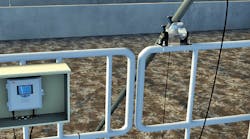I recently have been reading a lot of science fiction, and decided to plunge into one of the most well-known and renowned sci-fi series of all time, Frank Herbert’s “Dune.” While predominantly focused on the political and diplomatic tensions and struggles between characters, families and governing bodies, more fascinating is the ecology of the desert planet Arrakis on which a majority of the book’s fiction takes place.
Arrakis is tremendously water-scarce to the point that rags used to wash and dry hands of high-ranking diplomats are wrung out into buckets to conserve water that is sold to the lower ranks of the population. A device called a catchtube is placed outside homes to capture condensation from the cooling of the atmosphere over night and the subsequent heating during the day. When a person dies, the water in their body is conserved and used throughout the community. Desert wanderers wear clothing that captures sweat and bodily fluids and processes them into potable water in a pouch around the waist.
Although originally published in 1965, these over-the-top methods of conservation and the extreme water scarcity in the novel have become more relevant than ever as Cape Town, South Africa declared April 22, 2018, Day Zero. On this day, the city’s water supply is expected to run out. Citizens in Cape Town are hopeful for alternative water sources and desalination plants that could make the ocean water along the coast potable. Those projects and plants, however, are running behind schedule, and with an unprecedented drought bearing down on the South African city, water is at a premium.
While the reservoirs will not run completely dry by April 22, the city will turn off water for all but only essential uses, like hospitals. Residents will still be able to get water, albeit in 13-gal increments per day at one of 200 municipal water points throughout the city. Armed guards will be used to maintain the peace and prevent those trying to take more than they are allotted.
As this level of water scarcity becomes more common—California has implemented many limits to residents for water use—conservation efforts will be increasingly important. Leak detection also will be important, as it can find and further conserve water that otherwise is lost in the system. In this month’s issue, the Editor’s Focus article, “Bird’s Eye View,” on page 14 highlights the use of satellite images to find leaks by overlaying the data on water system maps. But the uses could be even more potent, as these satellite images could find underground aquifers of water that could be tapped for potable use.
Experts are already valuing water greater than oil, and that is unlikely to change. Sundeep Wasiekar, one of 10 experts who addressed the matter of water scarcity alongside former President of Slovenia Danilo Türk, at the Global High-Level Panel on Water and Peace Jan. 16, said it best.
“Is water the oil of the 21st Century? I say definitely not. Oil has alternatives—natural gas, wind energy, solar energy, bioenergy. The only alternative to water is water, and therefore, the matter of water is a matter of survival.”


